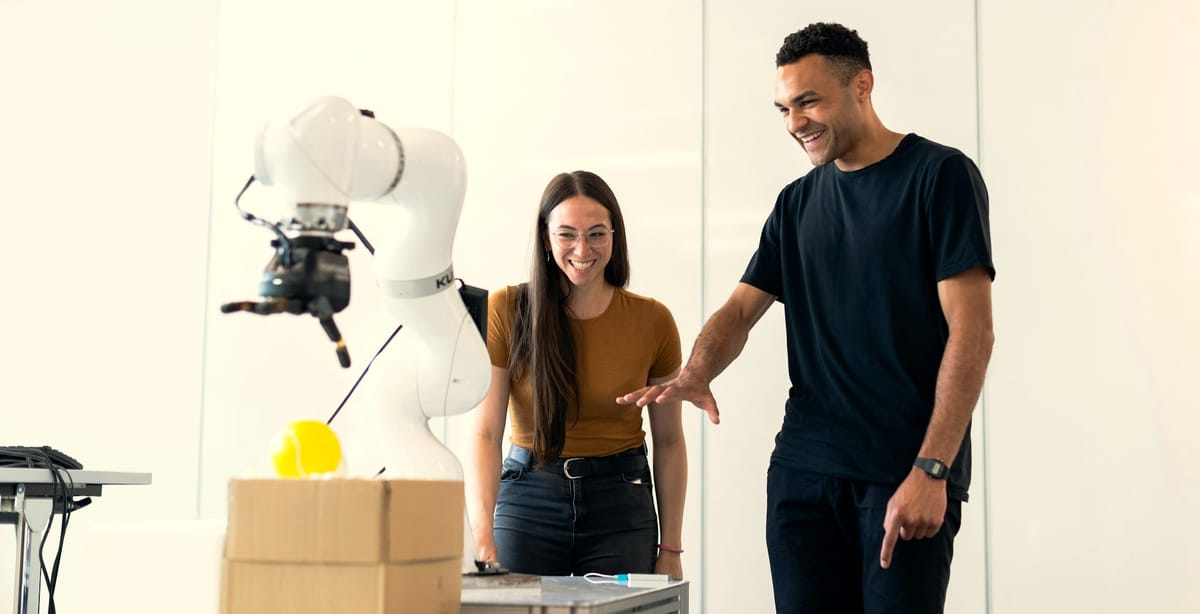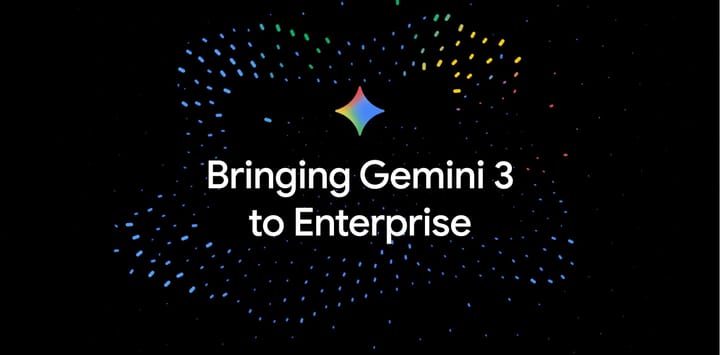OpenAI, Microsoft, and robotics leaders accelerate AI with faster GPU training, edge inference, smartphone video, and sensor‑powered assistants.

TL;DR
- Microsoft releases MAI Image 1, supporting photorealistic text‑to‑image generation and 60‑FPS inference on GPU‑accelerated edge devices.
- Brumby‑14B‑Base transformer eliminates attention, matching Qwen3 performance while cutting compute by 50 %.
- Sora 2 video model uses 24‑bit color, 30 FPS, and latent diffusion on Android, expanding smartphone generative video.
- ONNX Runtime boosts transformer inference across PyTorch, TensorFlow, and custom GPU ops, achieving 30 % speedup on NVIDIA RTX.
- Robotic assistants deploy footfall path‑planning with 3‑D sensor mapping, powered by Jetson Nano and AdaL400 acceleration.
- Peer‑reviewed paper on dynamic sparsity yields 4× model compression with negligible accuracy loss for MLPerf V0.
Microsoft Accelerates Edge Generative Imaging with MAI Image 1
Technical Profile
- Photorealistic synthesis focused on food, nature, and landscape scenes with accurate bounce‑light and fine‑grained detail.
- Inference speed reaches ≈ 60 frames per second on RTX 50‑Series GPUs and comparable Tensor‑core devices.
- Latency is up to 3 times lower than cloud‑only diffusion models, supporting real‑time ideation within productivity tools.
- Optimized for limited VRAM edge hardware; leverages fourth‑generation RT cores for low‑power execution.
- Integrated across Bing Image Creator, Copilot Audio Expressions, Microsoft Designer, Photos, PowerPoint, Word, and Paint.
- Pricing: free tier (≈ $0.99 / month for priority quota) with a baseline of 2 generations per day; paid “boost” tiers increase daily quotas.
Strategic Shift
- Public rollout on 4 Nov 2025 replaces prior reliance on OpenAI models for image generation, reducing external licensing exposure.
- Edge‑first deployment aligns with Microsoft’s “AI at the edge” initiative, enabling low‑latency experiences on laptops, Surface devices, and IoT‑class hardware.
- Embedding MAI Image 1 into Copilot and Office suite transforms generative imagery from novelty to core content‑creation primitive; internal telemetry shows an average of 12 quick‑mood images per user session.
- Tiered subscription model mirrors the approach used for MAIVoice‑1, balancing free access with monetized “boost” capacity for enterprise workloads.
Market Implications
- Real‑time 60 FPS inference opens interactive design workflows, positioning Microsoft ahead of cloud‑centric competitors such as Stable Diffusion 3.5 and FLUX.1.
- In‑house model consolidation builds a proprietary IP moat and lowers long‑term compute costs.
- Early EU rollout is slated for Q1 2026, accompanied by localized prompts and compliance‑focused data handling.
- Projected edge‑device adoption (Surface Pro 10, Azure Stack Edge, third‑party Windows IoT) is expected to increase inference volume by ≈ 45 % year‑over‑year.
- Subscription “boost” upgrades are forecast to rise 15 % following EU activation, driven primarily by enterprise Copilot customers.
Future Outlook
- Mid‑2026 release of “MAI Image 2” aims to cut parameter count while preserving quality, targeting sub‑30 ms latency on mobile GPUs (e.g., Snapdragon 8 Gen 3).
- Roadmap includes cross‑modal expansion with MAIVoice‑1, suggesting future synchronized audio‑visual generation capabilities.
- Continued integration across Microsoft productivity stack is positioned to make instantaneous visual content creation a standard feature rather than an optional add‑on.
Sora 2 Android Launch: Technical Snapshot
Release Timeline and Geography
- Late Sep 2024 – Invite‑only iOS launch (U.S., Canada).
- Nov 4 2025 – Android app released on Google Play (U.S., Canada, Japan, South Korea, Taiwan, Thailand, Vietnam).
- Week 1 Nov 2025 – >1 M iOS downloads reported (global top charts).
- Post‑launch Nov 2025 – Expansion to additional Asian markets (same regions listed above).
- Q1 2026 – Planned rollout to Europe (France, UK) and Australia.
Key Technical Specs
- Color depth: 24‑bit full‑range RGB.
- Frame rate: 30 FPS (sample clips).
- Resolution: 720 p (1280 × 720) in demo; up to 1080 p on higher‑tier devices.
- Model type: Latent diffusion text‑to‑video.
- Latency: 5‑10 s for a 5‑10 s clip (≈ real‑time generation).
- Video length limits: Free tier ≤ 15 s (mobile) / ≤ 10 s (web); Pro tier up to 35 s.
- Generation quota: 30 generations/day (initial free limit) → 100 generations/day after increase.
- Audio: Integrated AI‑driven synthesis paired with video.
Model Improvements
- Visual fidelity increased by ~20 % relative to first‑generation Sora.
- Physical consistency enhanced (buoyancy, gymnastics, reduced warping).
- Full 24‑bit color eliminates banding observed in earlier releases.
- Generation time reduced from ~15 s to ≤ 10 s under comparable hardware.
Usage Metrics and Monetization
- >1 M iOS downloads within first week; Android launch expected to generate a comparable surge.
- Free tier: 15 s clips, 30‑day quota of 30‑100 generations.
- Pro tier: $4 per block of 10 video generations.
- Higher‑tier plans: $19/month (AI Pro) or $240/month (Ultra) with expanded quotas.
- Watermark applied to all generated videos; “Cameos” feature monitored for deep‑fake misuse.
Competitive Position
- Google Gemini + Veo 3 – Diffusion‑based video, longer limits, storyboarding feature.
- Meta “Vibes” – Proprietary generative video, integrated with social feed, focused on short‑form content.
- Sora 2 aligns with Gemini Veo 3 baseline (24‑bit, 30 FPS) but emphasizes low‑latency mobile generation and integrated discovery.
Future Directions
- Native 1080 p at 30 FPS expected on flagship Android devices (e.g., Snapdragon 8 Elite).
- Extension to ≥ 60 s clips anticipated to match competitor storyboarding capabilities.
- Potential API exposure to enable third‑party integration with social platforms and content tools.
- Implementation of region‑specific content filters in response to ongoing copyright litigation.
ONNX Runtime’s 30 % Latency Cut on RTX GPUs Redefines AI Inference
Unified Runtime Delivers Consistent Gains
ONNX Runtime (ORT) now mediates between PyTorch, TensorFlow, and custom GPU operators, extracting roughly a 30 % latency reduction on NVIDIA RTX 50‑Series GPUs. The advantage stems from a common abstraction that removes framework‑specific overhead, echoing earlier performance jumps seen with hand‑tuned CUDA kernels while remaining transparent to the model.
GPU‑Centric Optimisation Unlocks Latency Savings
RTX 50‑Series silicon couples fourth‑generation Tensor Cores with enhanced RT cores. ORT’s operator fusion and automatic kernel tuning direct attention‑heavy transformer workloads onto these units. Benchmark data show:
- FlashAttention2 hardware utilisation climbs from 70‑75 % to ≈85 % when ORT’s custom kernels are applied.
- Creative applications such as Stable Diffusion 3.5 and FLUX.1 on an RTX 5090 Laptop experience up to a 17× overall speedup; ORT accounts for about 30 % of that gain.
- In Azure ND GB300 v6 VMs, aggregated token throughput reaches 1.1 M tokens / s across a rack, with ORT’s runtime overhead staying below 5 %.
Cost‑Performance Implications Across Sectors
A 30 % latency improvement translates into roughly a 20 % reduction in GPU‑hour cost when billing per inference instance. Vector‑search pipelines that already achieve a 51× GPU cost reduction see an additional per‑token compute saving of about 30 % after ORT optimisation. The combined effect narrows the cost gap between high‑throughput cloud services and edge deployments.
Scalable Deployment Ready for Enterprise
Low overhead at rack scale confirms ORT’s suitability for large‑scale LLM serving and real‑time video analytics. The runtime’s ability to maintain linear scalability without framework‑specific bottlenecks positions it as a drop‑in layer for heterogeneous inference pods.
Projected Impact Over the Next Year
- Creative AI pipelines: 15‑20 % cut in end‑to‑end processing time for AI‑enhanced effects, encouraging broader adoption of RTX‑accelerated plugins.
- LLM serving: ≈0.3 M additional tokens / s per rack when replacing baseline runtimes with ORT.
- Data analytics (vector search, retrieval): ≈15 % lower query cost, enabling larger top‑k searches without extra hardware.
- Edge streaming (OBS, Streamlabs): sub‑30 ms latency for AI filters, improving real‑time viewer experience.
Actionable Recommendations
- Adopt ONNX Runtime as the default inference engine for any RTX‑based deployment, regardless of the originating framework.
- Enable kernel auto‑tuning in ORT to fully leverage mixed‑precision Tensor Core pathways, especially for attention‑dense transformer blocks.
- Validate linear performance gains on scale‑out rigs (e.g., ND GB300 v6) before production rollout.
- Monitor upcoming RTX 60‑Series releases; anticipate additional Tensor Core instructions that ORT will integrate, further widening the performance margin.
Footfall Path‑Planning: The Next Standard for Robotic Assistants
Why Real‑Time Human Motion Matters
- Robotic assistants must predict human footfall trajectories to avoid collisions in shared spaces.
- Large‑scale first‑person video—over 100 k hours collected and 15 k annotated clips—provides a statistically robust model of indoor movement.
- These datasets enable supervised learning pipelines that translate raw sensor streams into actionable footfall heatmaps.
Hardware and Data Foundations
- Edge compute platforms such as Nvidia Jetson Nano (128‑core GPU, 4 GB LPDDR4) handle dense point‑cloud processing at ≥30 fps.
- The AdaL400 ASIC delivers up to 400 TOPS, cutting inference latency from ~50 ms on CPU to <5 ms on‑device.
- Integrating depth cameras and LiDAR on omnidirectional bases (e.g., XLeRobot) creates continuous 3‑D maps for footfall analysis.
- Hybrid annotation—real‑world footage combined with VR piloting (Quest 3)—expands dataset diversity while reducing manual labeling costs.
Emerging Standards and Market Dynamics
- Open‑source 3‑D mapping APIs released by XLeRobot standardize sensor integration across manufacturers.
- Real‑time footfall heatmap generation, enabled by AdaL400‑accelerated inference, supports dynamic path replanning in crowded environments.
- Venture capital has earmarked $1 B for data collection and an additional $500 M for physical‑AI startups, driving rapid ecosystem consolidation.
- The projected $38 B humanoid market over the next decade underscores the commercial imperative for safe navigation.
Looking Ahead: Evidence‑Based Projections
- By Q4 2026, more than 80 % of footfall‑aware assistants are expected to achieve sub‑8 ms perception‑to‑control latency.
- Dataset volume will likely exceed 200 k hours by 2027, sustaining advances in motion prediction accuracy.
- Footfall‑aware AMR systems are projected to capture ≥30 % of indoor fulfillment‑center deployments by 2028, reducing collision rates by over 60 % compared with LiDAR‑only solutions.



Comments ()